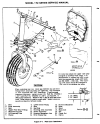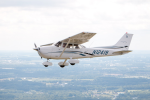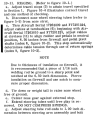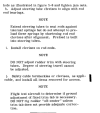Hello,
I have heard everything from "two" to "four" fingers of chrome showing on the nose wheel strut. Trying to see where this number came from I checked the maintenance manual (both pre 1976 and 1977 - 1986), both manuals list "5.15 in MIN to 5.30 in MAX".
I'm no bear, but the palm of my hand (thumb included) is about 4 inches. What's going on here? The only thing I can think of is perhaps maintenance may check the plane when it is suspended/jacked and there is no load on the nose. Any thoughts?
Picture from the manual attached. I also must admit I'm a but confused in the way they put the arrows for section D-D, but the section image looks like the nose strut to me.

I have heard everything from "two" to "four" fingers of chrome showing on the nose wheel strut. Trying to see where this number came from I checked the maintenance manual (both pre 1976 and 1977 - 1986), both manuals list "5.15 in MIN to 5.30 in MAX".
I'm no bear, but the palm of my hand (thumb included) is about 4 inches. What's going on here? The only thing I can think of is perhaps maintenance may check the plane when it is suspended/jacked and there is no load on the nose. Any thoughts?
Picture from the manual attached. I also must admit I'm a but confused in the way they put the arrows for section D-D, but the section image looks like the nose strut to me.




